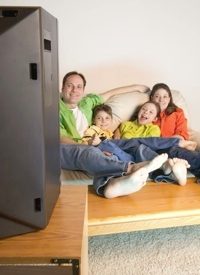
Released on Tuesday, the Census Bureau’s annual report flashed a dismal economic outlook, showing that U.S. poverty has exceeded 46 million people — nearly 1 in 6 Americans — and the number without health insurance spiking from 49 million to almost 50 million. As unemployment continues to hover around 9 percent, many Americans are financially exhausted, as the overall poverty rate reached 15.1 percent, up from the 14.3 percent recorded the previous year. The number of Americans now below the poverty line is the highest number recorded since 1959, when the Census first started analyzing such data.
Bruce Meyer, a public policy professor at the University of Chicago, warns that poverty levels may further escalate, as the demand for food stamps rises and a “staggeringly high” number of Americans are becoming unemployed for more than 26 weeks. Professor Meyer notes that more than 6 million people are categorized as “long-term unemployed,” and are more susceptible to falling into poverty.
Last year’s median household income was $49,445, a 2.3 percent decrease from 2009. Young adults, ages 15 to 24, suffered from a hefty drop in income, falling 9 percent to $28,322. For those aged 25 to 34, nearly 6 million “doubled up” their housing, meaning they moved in with parents or friends, which is up 25 percent since before the recession.
“It’s pretty bad for young people,” said Harry Holzer, a public policy professor at Georgetown University. “They are cushioning the blow in several ways by living with others and going to school longer, but eventually they will have to enter the labor market and find a very inhospitable place.”
Naturally, such “startling” figures will encourage liberals and the mainstream media to renew their unrelenting campaign for food stamps, unemployment benefits, and other welfare programs.
The Census Bureau defines 2010 poverty as $22,314 for a U.S. family of four. Although the Census’s new findings appear disturbing, The Heritage Foundation suggests that one must define more abstractly what constitutes “poverty,” particularly in relation to housing and lifestyle activities. For example, does poverty mean owning a home, two cars, and a big-screen TV? Does the reality of American poverty really match up to its stereotype of people living in cars and homeless children roaming alleys for food?
In fact, a mere 4 percent of the poor have become temporarily homeless, while 40 percent live in apartments, less than 10 percent live in trailers or mobile homes, and almost 50 percent live in single-family houses or townhouses. Even more shocking, 42 percent of America’s “poor” actually own their own homes. The vast majority reside under adequate living conditions, with more living space per person than the average non-poor person in France, Britain, or Sweden.
Taken from various government reports, Heritage published information revealing certain lifestyle characteristics about Americans who are defined as “poor” by the Census Bureau:
• 80 percent of poor households have air conditioning. In 1970, only 36 percent of the entire U.S. population enjoyed air conditioning.
• 92 percent of poor households have a microwave.
• Nearly three-fourths have a car or truck, and 31 percent have two or more cars or trucks.
• Nearly two-thirds have cable or satellite TV.
• Two-thirds have at least one DVD player, and 70 percent have a VCR.
• Half have a personal computer, and one in seven have two or more computers.
• More than half of poor families with children have a video game system, such as an Xbox or PlayStation.
• 43 percent have Internet access.
• One-third have a wide-screen plasma or LCD TV.
• One-fourth have a digital video recorder system, such as a TiVo.
Indeed, American living conditions once considered barren and dilapidated are now furnished with computers, big-screen TVs, and all the latest technology. Although the mainstream media often report widespread hunger in the country, most poor families never experience hunger or food shortages.
In its household food security survey, the U.S. Department of Agriculture analyzes data on such issues, and found that 82 percent of poor adults say they never were hungry at any time in the past year due to lack of food; 83 percent of poor families reported having an adequate supply of food throughout the year; and 96 percent of poor parents said they could afford to purchase food, and their children were never hungry at any time during the year.
Nevertheless, the Census Bureau’s new release should not be kicked to the curb, as the statistical analysis still shows that the economy has not overcome the Great Recession — even after the federal government has pumped hundreds of billions of dollars into the economy. The fact that more Americans are experiencing joblessness and income loss is important to note, particularly as the President concocts another $450 billion “stimulus” plan.
Critics might suggest that the Census Bureau’s new poverty numbers may become political ammunition for the Obama administration, as the President hawks his new jobs plan by promoting class warfare — while continuing to hound “oil companies” and “corporate jet owners” for their lacking contributions to society.
Poverty is bad for society, but for Washington political agendas, sometimes it is the most effective tool for buying votes and passing legislation that under normal economic conditions the American public would overwhelmingly disapprove of.



